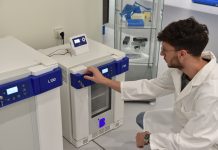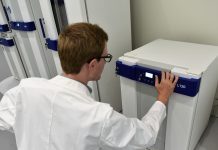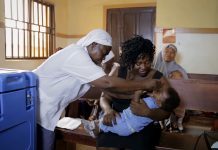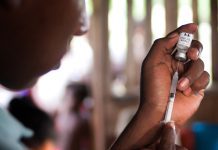
The medical cold chain plays a vital role around the world in preserving the integrity of temperature-sensitive products, such as vaccines, medications, and biological samples.
Vaccines, for instance, lose their potency if exposed to temperatures outside the recommended range, jeopardising public health efforts to control preventable diseases. Similarly, certain medications and biological samples require strict temperature control to remain effective and viable for treatment and diagnostic purposes. The medical cold chain solves this issue by ensuring these vital supplies are stored and transported within specific temperature ranges, typically between 2°C and 8°C.
However, maintaining this network of refrigerators, freezers and transport systems becomes significantly challenging during natural disasters such as earthquakes, cyclones, hurricanes, and other severe natural events.
Challenges posed by natural disasters
Natural disasters such as cyclones and hurricanes pose a multitude of challenges to the integrity of the medical cold chain, endangering the viability of critical medical supplies.
One of the primary challenges is the occurrence of widespread power outages. These severe weather events often lead to prolonged electrical disruptions, which can disable refrigeration systems crucial for maintaining the necessary temperature range for vaccines and other temperature-sensitive products.
Infrastructure destruction and the following transportation disruptions present another significant hurdle. Flooded roads, destroyed bridges, and debris-strewn landscapes can obstruct the movement of medical supplies, delaying their delivery to affected areas. In the immediate aftermath of a disaster, damaged infrastructure can isolate communities, making it difficult to access healthcare facilities and distribute essential medications.
Additionally, physical damage to storage facilities and transportation hubs can directly impact the cold chain. Destruction of warehouses and refrigerated storage units compromises the security and effectiveness of stored medical products, potentially rendering them unusable.
Communication breakdowns further complicate the situation. Natural disasters can damage communication networks, impeding coordination among emergency responders, healthcare providers, and logistics teams. This lack of communication can lead to delays and errors in the distribution and monitoring of medical supplies.
In March 2023, B Medical Systems donated 50 medical transport boxes in collaboration with the Directorate for Development Cooperation and Humanitarian Affairs of the Luxembourg Ministry of Foreign and European Affairs (MAEE), to provide the necessary cold chain environment for immediate medical support for the relief effort in Turkey and Syria following an earthquake.
Strategies for medical cold chain resilience
Despite these challenges, several strategies have been employed to enhance the resilience of the medical cold chain during natural disasters:
- Robust infrastructure
Building storage facilities that can withstand extreme weather conditions is crucial. This includes using reinforced structures and ensuring backup power systems, such as generators and solar power, are in place to maintain refrigeration systems functioning during power outages. Moreover, it is important that devices used to store important medications such as refrigerators and freezers are also robust and built to withstand adverse events, such as power loss, physical shocks, high or low ambient temperatures and high levels of humidity. This ensures that the cold chain systems being used can support the continuation of healthcare efforts during adverse conditions because of their superior autonomy and insulation. - Emergency preparedness plans
Developing comprehensive emergency response plans that include cold chain management is vital. These plans should outline protocols for maintaining temperature control, alternative transportation routes, and coordination mechanisms with local and national emergency response teams. - Advanced technology
Leveraging technology, such as temperature monitoring systems with real-time alerts, can help track the temperature status of medical supplies throughout the cold chain. GPS-enabled devices can provide real-time location and condition updates, enabling swift action if deviations occur. - Training and capacity building
Training healthcare workers and logistics personnel in cold chain management during emergencies ensures they are equipped to handle disruptions effectively. Regular drills and simulations can help prepare teams for real-world scenarios. - Partnerships and collaboration
Collaborating with government agencies, non-governmental organisations, and private sector partners can enhance resource mobilisation and logistical support during disasters. These partnerships can provide additional transportation options, storage facilities, and technical expertise.
Cold chain outlook
The resilience of the medical cold chain during natural disasters is a testament to the advanced engineering, innovative technology, and manufacturing capabilities that underpin these critical systems. The development and deployment of robust infrastructure, state-of-the-art temperature monitoring systems, and comprehensive emergency preparedness plans ensure the efficacy of vital medical supplies even under the most challenging conditions.
Additionally, the dedication and ingenuity of healthcare professionals, logisticians, and emergency responders play a crucial role in maintaining the integrity of the cold chain. As climate change continues to increase the frequency and intensity of many natural disasters, ongoing efforts to enhance the medical cold chain’s resilience will be essential for protecting public health and saving lives. By investing in these areas, the medical community can continue to safeguard the efficacy of temperature-sensitive products and ensure their availability when they are needed most.






